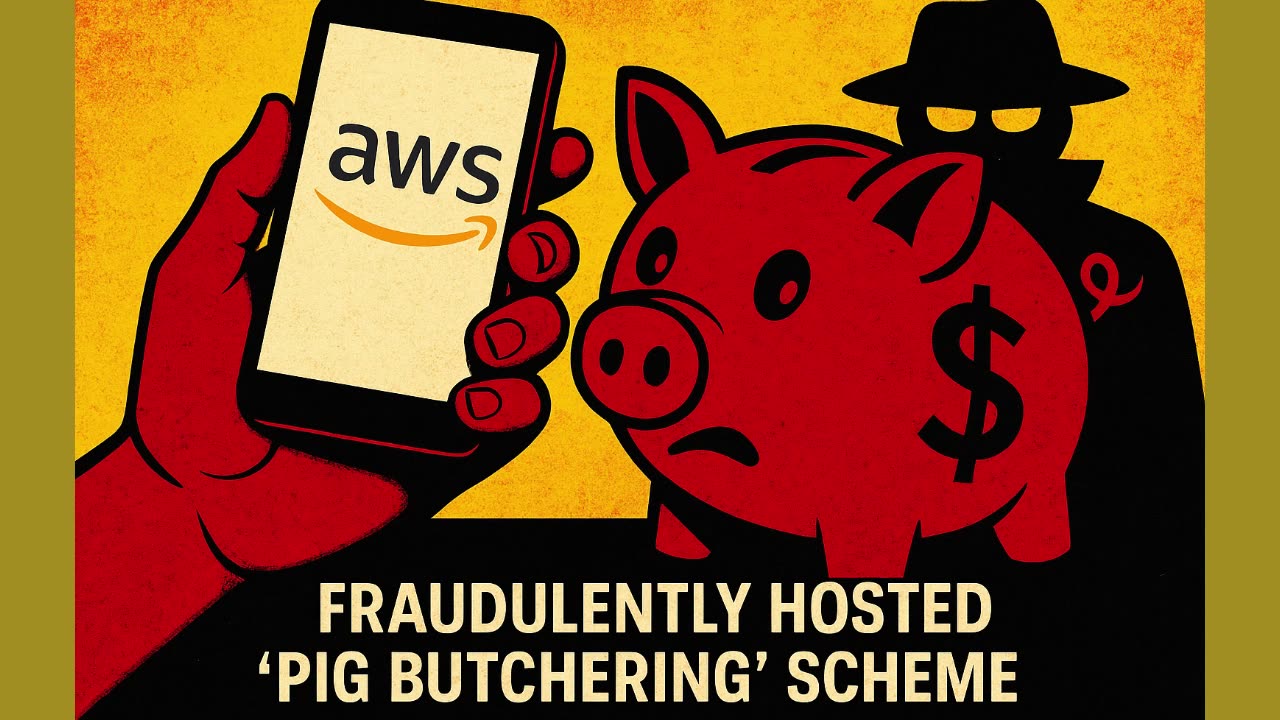Premium Only Content

Part 64:What Is Cloud Computing? | AWS vs. Pig-Butchering Reality
When Amazon Web Services talks about itself, the message is clear: trust us, we’re the backbone of the digital world. Their 2021 video “What is Cloud Computing?” boasts over a million views, selling cloud as the future — on-demand IT resources, pay-as-you-go pricing, and the agility to scale globally in minutes.
But here’s the problem. That same agility, the same global reach AWS brags about, was also handed to fraudsters. In my case, criminals used AWS’s servers in Singapore — IP 54.179.240.194 — to host fake domains like Intellisoft.rest and Intellisoft.one. These weren’t harmless experiments. They were pig-butchering scams. They stole real money from real people, including me, with victims collectively losing tens of thousands of dollars.
Let’s break down the contradiction.
AWS markets itself as the “most comprehensive, broadly adopted cloud,” trusted by healthcare, finance, even governments. Yet, behind the curtain, AWS’s infrastructure gave fraudsters the ability to impersonate legitimate companies like Intellisoft.io and defraud victims worldwide.
AWS says cloud helps customers “reduce costs, innovate faster, and scale globally in minutes.” That’s true — the criminals did scale globally in minutes. They didn’t build hospitals or new apps. They built fake platforms, sucked in deposits, and vanished — all while AWS billed them for server time.
This wasn’t a one-time mistake. Abuse reports were filed — AWS Case #54816052471 — but instead of cutting off the fraud, the scammers simply migrated from one AWS domain to another. Cloudflare cloaked them. NameSilo registered them. And AWS kept collecting its fees.
So while Amazon polishes its brand with slick videos about startups, governments, and innovation, the reality is darker. Their servers enabled organized fraud networks. Their billing system profited from crime. And their negligence amplified consumer harm on a global scale.
This is why my case against AWS isn’t just about me. It’s about the contradiction between trillion-dollar marketing claims and the lived reality of victims who lost savings, futures, and peace of mind.
Next time you see AWS brag about “trust, security, and innovation,” remember this: those same tools were used to steal. And the evidence is clear — AWS wasn’t just a bystander. They were part of the financial chain.
watch my full presentation on Rumble — link in the comments.
-
 2:14:13
2:14:13
FreshandFit
11 hours agoShe Was Given Extravagant Gifts And STILL Friendzoned Him +EXPOSED
129K27 -
 1:16:07
1:16:07
Man in America
9 hours agoOperation Gladio: The CIA, Mossad & City of London’s Plan for a New World Order
18.6K15 -
 2:11:41
2:11:41
Badlands Media
10 hours agoDEFCON ZERQ Ep. 016: Shadow Governments, Ancient Tech & the Spiritual War for Humanity
68.9K50 -
 2:09:24
2:09:24
Inverted World Live
5 hours agoRats Have Learned to Hunt Bats | Ep. 135
25.2K5 -
 2:48:01
2:48:01
TimcastIRL
6 hours agoLIVE Election Coverage: Polling Stations SWATTED, Bomb Threats Called In | Timcast IRL
232K164 -
 3:30:07
3:30:07
Barry Cunningham
6 hours agoBREAKING NEWS: COUNTDOWN TO COMMUNISM! ELECTION RESULTS SHOW!
48.1K40 -
 2:11:28
2:11:28
DeVory Darkins
5 hours agoLIVE NOW: 2025 Election results and Exit Polls AMA
57.9K42 -
 2:34:04
2:34:04
DLDAfterDark
4 hours ago $0.05 earnedJust Another Tuesday - In Virginia - The Governor's Race & Glock Talk
21.6K2 -
 3:21:38
3:21:38
The Charlie Kirk Show
7 hours agoJUDGMENT DAY 2025: The Election Results Stream
186K78 -
 3:51:07
3:51:07
MattMorseTV
8 hours ago $0.77 earned🔴Election Day LIVE COVERAGE.🔴
91.2K47